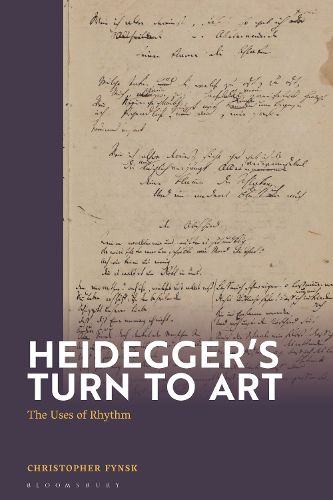Readings Newsletter
Become a Readings Member to make your shopping experience even easier.
Sign in or sign up for free!
You’re not far away from qualifying for FREE standard shipping within Australia
You’ve qualified for FREE standard shipping within Australia
The cart is loading…






In this major new contribution to Heidegger studies, Christopher Fynsk provides an original account of Heidegger's reflections on art, and in particular the poetic work of art, to explore the central yet overlooked Heideggerian idea that all art has a rhythmic character.
Following the development of Heidegger's thoughts on rhythm, this book focuses especially on the critical moment of Heidegger's turn to art in the mid-1930s and his reading of Friedrich Hoelderlin's river hymns. This not only allows for a new reading of his monumental essay "The Origin of the Work of Art", but also a sustained analysis of his engagement with Hoelderlin and Aristotle. Importantly, it further reveals the centrality of rhythm to Heidegger's thought and its relation to his other ideas. Indeed Fynsk connects rhythm to Heidegger's theorization of usage, "der Brauch", and in turn the role of usage to his reflections on the relation between being and human being.
Drawing on a wide range of art, from cave paintings to Francis Bacon, this is a significant and insightful study of the ontology of rhythm in Heidegger and beyond.
$9.00 standard shipping within Australia
FREE standard shipping within Australia for orders over $100.00
Express & International shipping calculated at checkout
In this major new contribution to Heidegger studies, Christopher Fynsk provides an original account of Heidegger's reflections on art, and in particular the poetic work of art, to explore the central yet overlooked Heideggerian idea that all art has a rhythmic character.
Following the development of Heidegger's thoughts on rhythm, this book focuses especially on the critical moment of Heidegger's turn to art in the mid-1930s and his reading of Friedrich Hoelderlin's river hymns. This not only allows for a new reading of his monumental essay "The Origin of the Work of Art", but also a sustained analysis of his engagement with Hoelderlin and Aristotle. Importantly, it further reveals the centrality of rhythm to Heidegger's thought and its relation to his other ideas. Indeed Fynsk connects rhythm to Heidegger's theorization of usage, "der Brauch", and in turn the role of usage to his reflections on the relation between being and human being.
Drawing on a wide range of art, from cave paintings to Francis Bacon, this is a significant and insightful study of the ontology of rhythm in Heidegger and beyond.